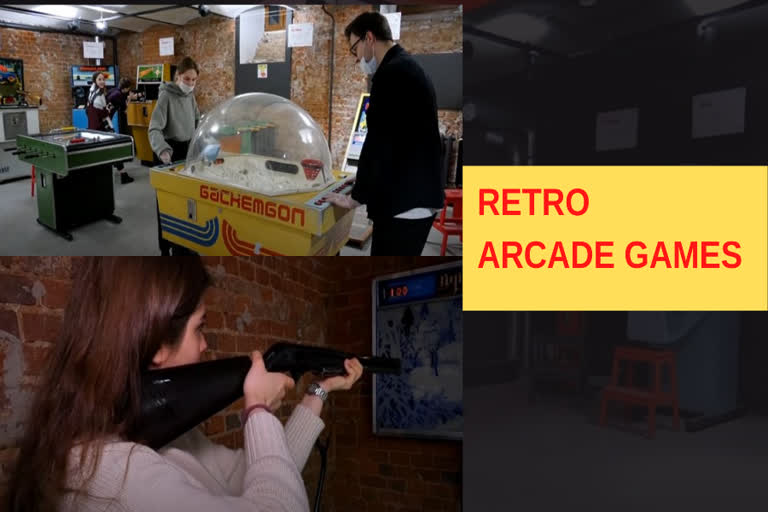Moscow, Russia: This is gaming retro style. These classic arcade machines were part of every Soviet childhood, not so long ago. While many museums instruct visitors to look but don't touch, it's entirely the opposite when it comes to the exhibits here. People can push buttons, turn handles, and generally compete against their friends in a nostalgic journey to 40 years into the past when these machines were especially popular in the Soviet Union.
"It was extremely popular. People would queue for too many machines. I personally remember that you were given three or four coins, you spent them, then you would spend one more hour watching others playing, peep through the periscope, at the Sea Battle game there are also two view windows, so when one person plays, two more can watch how he or she hits ships more accurately than you do," says co-founder of the museum, Maksim Pinigin.
Of course, the museum has a Sea Battle machine for visitors to try.
The player looks through the periscope and pretends to be a submarine commander, trying to hit ships with torpedoes.
It's also the machine that sparked the inspiration for the museum when one of the founders decided to install it to play at home 13 years ago.
"First of all, Sea Battle was the most popular game machine, second, the most common, if someone played an arcade game machine in the Soviet Union, most likely it was the Sea Battle. It is from this machine the production of game machines started in the Soviet Union, so it is the very first Soviet game machine. And so, it is considered the symbol of the Soviet game machines industry," says museum administrator Ksenia Zubareva.
The first machines here were restored in a garage.
After that, the museum founders realized that there are many more interesting units and the pleasure of playing nostalgic games could be shared, so they went on collecting more exhibits from around the country.
Forgotten and broken down, the Soviet-era arcade game machines were discovered in abandoned parks, Soviet Houses of Culture, empty pioneer camps, and schools, sometimes even in military departments.
But the museum founders didn't always get to them in time.
"It used to be like a stab to our hearts when we learned that just a little bit before our arrival all the game machines were passed over onto scrap metal collection," says Pinigin.
The Soviet arcade games industry lasted from the 1970s up to the early nineties when the Soviet Union collapsed.
